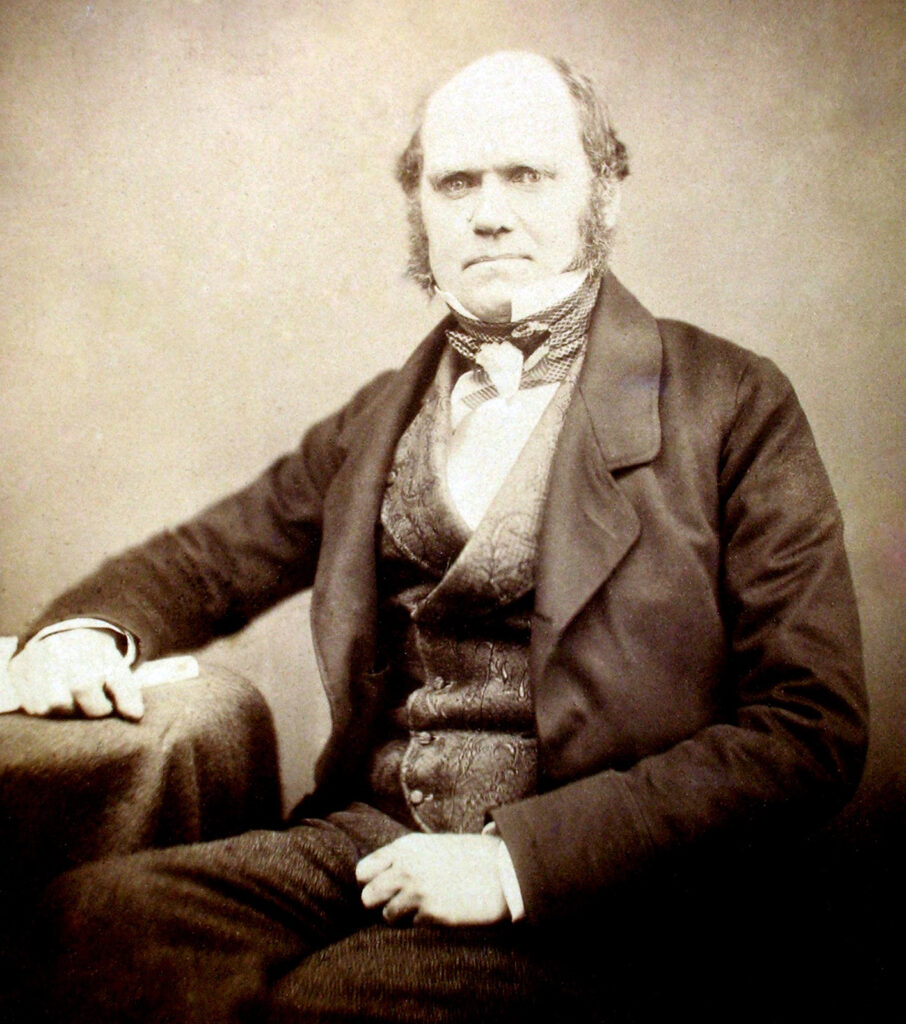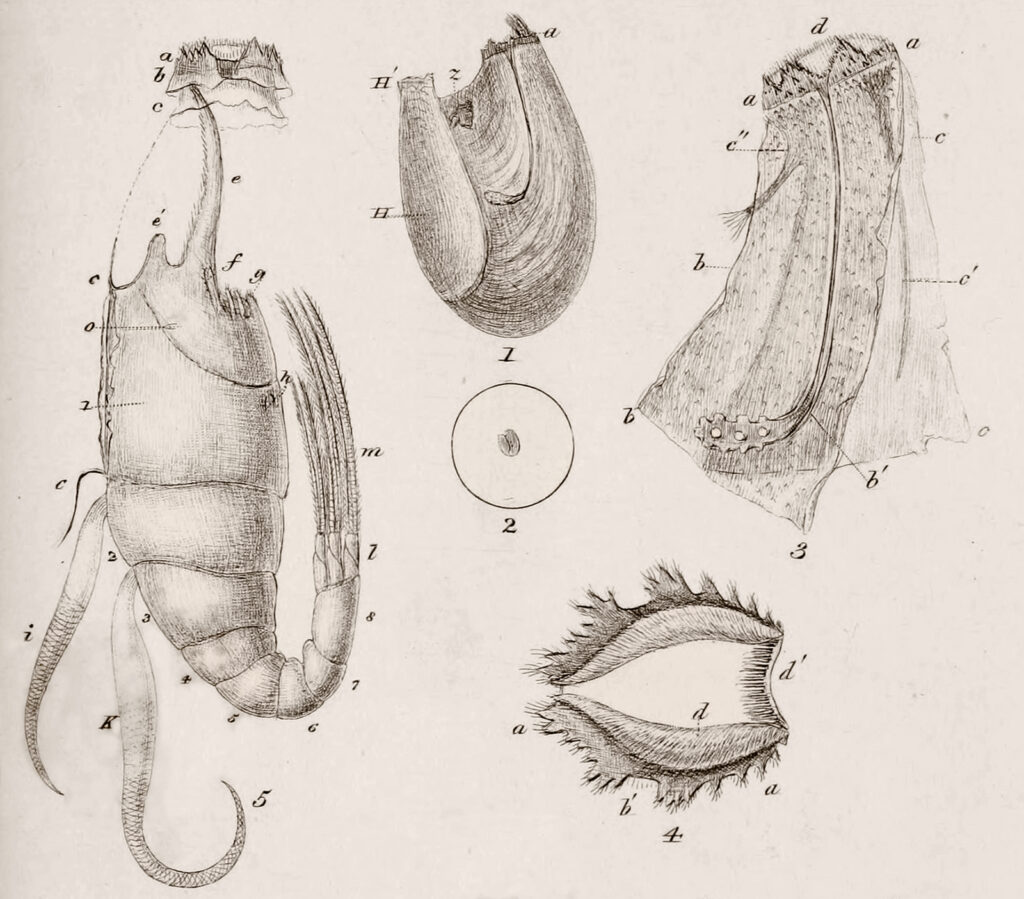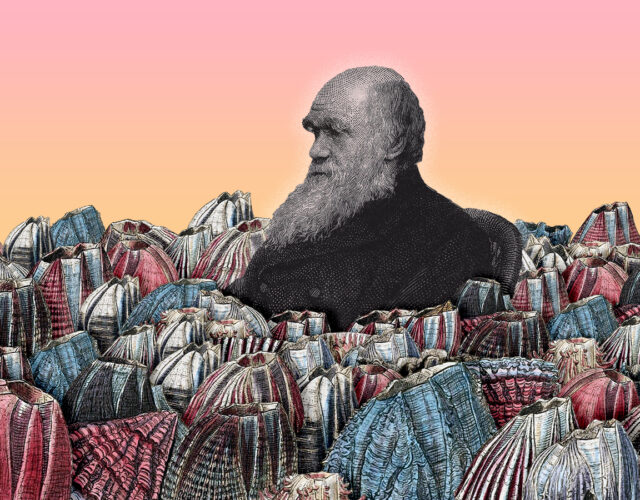If asked to pick an animal that influenced Charles Darwin, most of us would select the same one: the iconic Galápagos finches with their precisely crafted beaks, each tuned to a different ecological niche.
But the truth is, Darwin didn’t really care about finches. He collected some during his famous voyage on the Beagle but proceeded to make a complete hash of them. He actually misidentified the birds, calling them grosbeaks, and had to be corrected by an expert back in England. Worse, he forgot to record the island of origin for most of the finches, making them useless for evolutionary study. Darwin didn’t even specifically mention Galápagos finches in his monumental On the Origin of Species.
So while pop culture usually associates evolution with the Galápagos, Darwin left the islands in the same state he’d arrived—a creationist. What animals shaped his theory of evolution, then? Pigeons played a part, as did worms. But the biggest influence on Darwin was a lowly, much-despised marine pest—the barnacle.
In January 1835, three years into the voyage, the Beagle anchored off the coast of Chile, and Darwin—who’d been seasick much of the trip—scrambled ashore to walk the beach. He found a lush green canopy covering silky sand, with snow-peaked mountains visible in the distance. Wild potatoes grew near the shore, and otters splashed in the water, hunting crabs.
On the beach Darwin found a strange shell. It was coconut-sized and had a baffling feature: hundreds of millimeter-sized holes, as if somebody had blasted it with tiny buckshot. He’d never seen anything like it.
That night, back on the Beagle, Darwin studied the holes under his microscope. Using a needle, he pried something unexpected from inside them—minute barnacles, roughly a tenth of an inch long. They were cream-colored and doubled over on themselves like hairpins.
Unlike other barnacles, these lacked shells. And while most barnacles secrete a cementlike glue and lock themselves on to anything convenient—ships, docks, the bellies of whales—these barnacles were living as parasites inside another creature’s shell. No scientist had ever recorded anything like it, and despite all the other wonders Darwin saw on the rest of the voyage, his mind kept circling back to that odd species of barnacle. He nicknamed it Mr. Arthrobalanus, which means “jointed barnacle.” On his return to England in 1836, he was eager to study Mr. Arthrobalanus more thoroughly.
Alas, life intervened. As the Beagle’s naturalist, Darwin had official reports to write. A general travelogue appeared in 1839, followed by a book on coral reefs in 1842. Meanwhile, Darwin read a gloomy essay by preacher Thomas Malthus on starvation and the struggle for survival. Gradually, over many weeks, this kindled an idea in Darwin. If life was a struggle, then beneficial traits would give some creatures an advantage. As a result, those creatures would have more offspring. It was the first inkling of his now-famous theory of natural selection.

Still, at that point, it was just an inkling—hardly proof. Worse, Darwin soon recognized a big flaw in his idea: uniformity.
On the Beagle, Darwin had collected thousands of animals from across the globe, and he, of course, could see differences between different species. But within a species, all the individuals looked pretty much the same, even to his naturalist’s eye.
This was a problem because natural selection needs variation to work on. If barnacles A, B, and C were all identical, natural selection couldn’t distinguish between them, and survival would be purely a matter of luck. To his frustration, Darwin realized that such uniformity could prove fatal to his theory.
However puzzled, Darwin wrote up a summary of his ideas in 1842—along with instructions to his wife, Emma, to publish it if he died suddenly. Then it was back to the Beagle grind. Darwin released a book on volcanos (1844), then one on the geology of South America (1846). All the while, his big idea languished. Given how he jumped from topic to topic, some historians have called the Darwin of this period a “genuine dilettante.”
And it wasn’t just historians. In a letter to botanist Joseph Hooker, Darwin confidentially laid out his theory of evolution and the origin of species, seeking Hooker’s input. Hooker was not impressed, and in fact rebuked Darwin. How could Darwin claim to know the origin of species in general, Hooker asked, if he’d never studied even one species in detail?
Darwin was mortified. He’d basically been called an amateur, a dabbler. He needed to rectify the situation immediately.
That’s when he remembered Mr. Arthrobalanus. Darwin decided to spend a month describing it in detail to prove his bona fides to Hooker and others. Then he could jump back into his big theory about evolution and shore it up. It all seemed so easy. Instead, barnacles would dominate the next eight years of his life.
To describe Mr. Arthrobalanus, Darwin needed to know what differentiated its species from other species of barnacles. So he began writing letters to museums, requesting barnacle specimens. Unfortunately, it soon became clear that all existing work on barnacles was sloppy and third rate. There were gaps, obvious mistakes, redundancies. With a sigh, Darwin realized he would have to reclassify everything himself. He started writing more letters, requesting more specimens.
Smelly boxes began arriving at his home from all over the world. He kept them in teetering piles in his study. Peering through a microscope, he used pins and porcupine quills to dissect the barnacles and tease apart their wispy organs. Whenever he saw something interesting, he’d push his wheeled stool back and scribble down a note in his atrocious handwriting. But despite the daunting task, he ended up loving the work. As he told a friend, “After having been so many years employed in writing my old geological observations, it is delightful to use one’s eyes and fingers again.”
He often worked straight through the night beneath an oil lamp—straining so hard that he suffered migraines and intestinal distress, even nightmares. Doctors begged him to stop; his health was nearly broken. Darwin refused. Every day the postman rang, and every day the piles of barnacles grew treacherously taller.
Word about Darwin’s mania soon got around. The writer Edward Lytton-Bulwer—he of the thundering cliché, “It was a dark and stormy night”—satirized Darwin in a novel as “Professor Long,” a pedantic bore whose interminable lectures on marine critters put everyone within earshot to sleep. Then there was the story about Darwin’s son George. As a boy, George visited a friend’s house and was flabbergasted to learn that the friend’s father had no dissecting desk or microscope. George stammered, “Then where does he do his barnacles?”
But however much people mocked Darwin, his barnacles were providing fascinating insights into evolution. For one thing, he noticed how certain organs in one barnacle species were often repurposed in another species. It’s similar to how the forelimbs in ancient mammals got transformed into wings in bats and flippers in dolphins.
Conversely, he discovered that unused organs often withered away, especially when it came to barnacle sex. Mr. Arthrobalanus was a prime example.
All known barnacles then were actually hermaphrodites, with both male and female sex organs. In calling the specimen “mister,” Darwin had been joking around. But in truth, the joke was on him. It turned out that Mr. Arthrobalanus’s species was not hermaphroditic. In fact, Mr. Arthrobalanus wasn’t even a mister—she was Ms. Arthrobalanus, a female.
So where were the males? Embarrassingly, Darwin had nearly thrown them away. He’d been finding little tick-like things attached to Ms. Arthrobalanus—parasites, he assumed. So he picked them off. In reality, these “ticks” were the menfolk. They were ten times smaller than the females and consisted of nothing but sacs of sperms. All other body parts on the males, such as stomachs and heads, had been whittled away by evolution.

This arrangement startled Darwin. But it also got him thinking, especially when he found another barnacle species with no females. In that species, half the individuals were hermaphrodites and half were dwarf males—males on their way to becoming nothing but sperm-filled ticks.
In other words, he’d found a transitional state between hermaphrodites and the distinctly sexed barnacles of Ms. Arthrobalanus. A missing link. The discovery electrified him: “Down among his barnacles,” one biographer wrote, “he felt he was seeing evolution in action.”
Even better things were coming. Again, Darwin’s initial, groping theory of evolution still had a big flaw: uniformity. If all creatures within a species were identical, how would natural selection determine who lived and who died?
But box by box, barnacle by barnacle, Darwin trained his eye and transformed himself into a barnacle expert. As a result, he started noticing variations he had never noticed before. One barnacle might have a thinner shell or wider mouth. Another might have longer legs or oddly shaped internal organs. These were tiny variations, easy to overlook. But they were enough for natural selection to act on.
Darwin then extended what he’d learned with barnacles to other creatures. He once marveled over “the variability of every part . . . of every species. When the same organ is rigorously compared in many individuals I always find some slight variability.” Later he added, “I am convinced that the most experienced naturalist would be surprised at the number of the cases of variability” throughout nature. This eliminated the fatal flaw in his theory. Despite appearances, nature wasn’t uniform at all. Before studying barnacles, Darwin simply lacked the skill and expert knowledge to see all the nuances.
Darwin’s experience isn’t how we usually envision creative breakthroughs. We expect eurekas, sudden flashes of insight. We want drama. What Darwin did, hunched over those smelly barnacles, seems like the opposite of creativity—petty drudge work. But that patient, yearslong labor was actually critical. Thanks to his obsession with barnacles, his once-vague theory of evolution itself evolved to a higher plane.




